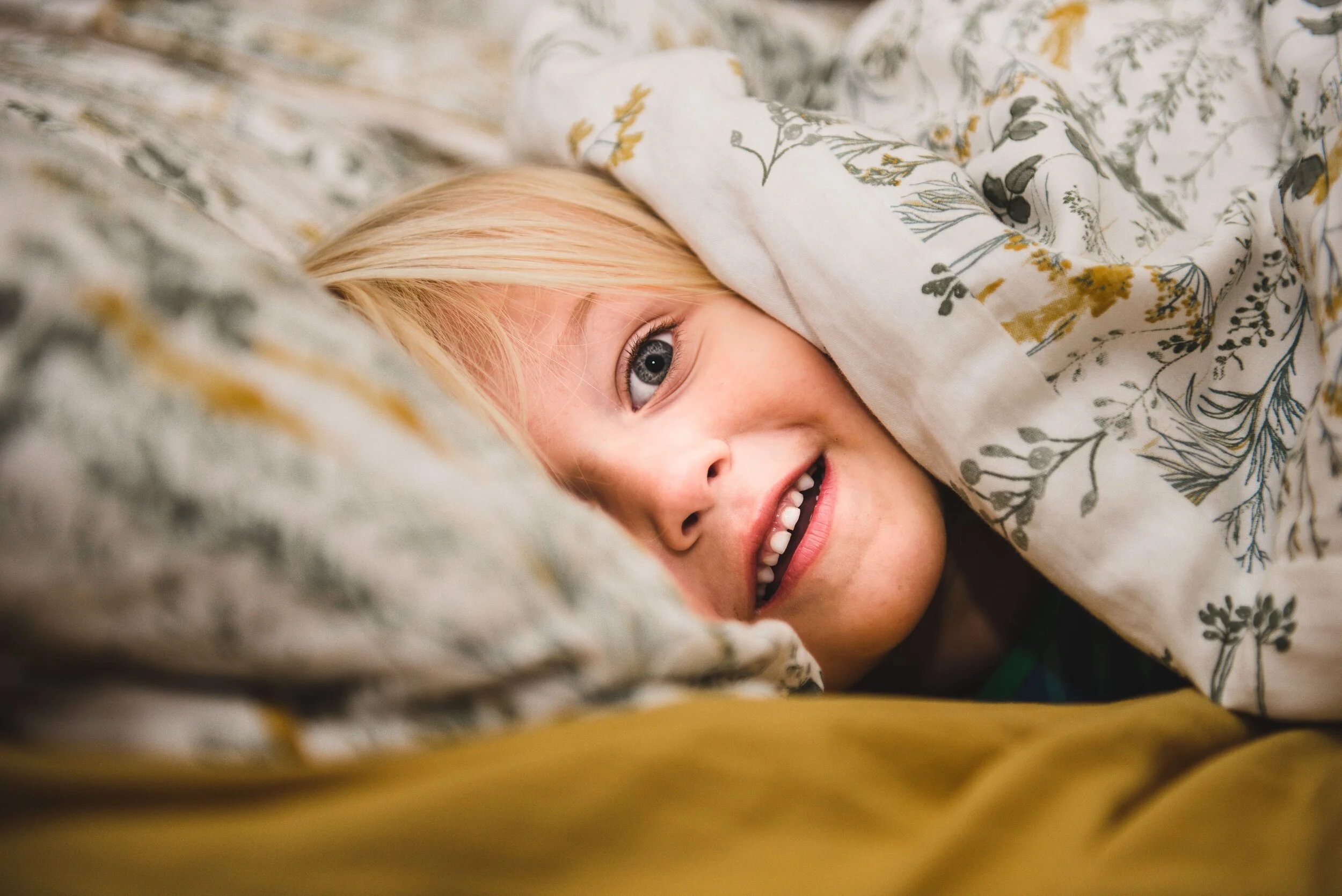Managing Night Terrors for Kids (and parents too!)
A good night’s sleep is what every parent wants for their child. An adequate amount of sleep aids to a child’s improved attention, behaviour, cognition and overall mental and physical health. However, there are times that children experience disruptions at night that disrupts their slumber. These experiences can either be a nightmare or a night terror.
Today I’m going to answer the most common questions I get in practice.
What is the difference between nightmare and night terror? What are the causes and symptoms? What mechanisms should be undertaken to manage night terrors?
Nightmares vs. Night Terrors
Often when children wake through the night, and they are upset in some way, we put it down to nightmares. However, it’s important to know the difference between nightmares and night terrors.
Nightmares
A nightmare is an experience that most often occur during lighter sleep phases REM (rapid eye movement). It causes fear and panic and when a child awakens, he or she can remember scenes of being chased, falling or the terrifying monster hiding under the bed. These themes or visions often repeats itself for week, months or even years. It can be difficult to put your child back to sleep after a nightmare. Most of the time, a larger percentage of children experience occasional nightmares (as opposed to nightly).
Night terrors are different to nightmares
On the other hand, night terrors or sleep terrors, are part of a larger category of sleep disorders called parasomnias. It occurs during non-REM cycles of sleep and instead of vivid dreams and one will experience feelings of terror. It can happen at any age, say from infancy to late in life. It is characterised by an individual trembling and shaking with fear. Some individuals may awaken and it is also possible that others may remain asleep and be very difficult to awaken.
Unlike nightmares wherein a child can remember some unpleasant scenes, night terrors just give them a terrifying feeling in which they don’t remember the particular trigger. There is just an overwhelming sense of danger and panic. But once the physical signs of night terrors have abated, they can return to sleep in minutes.
Causes and Symptoms of Night Terrors
Night terrors are typically caused by over-arousal of the central nervous system during sleep. The two most common causes of nervous system over-arousal I see in practice are vestibular dysfunction and TMJ dysfunction.
There are also other factors to consider such as:
being overtired
stress
illness
fever
migraines
head injuries
new sleeping environment
lack of sleep
too much caffeine or chocolate
genetics
sleep apnea
PTSD (Post-Traumatic Stress Disorder)
food intolerances
EMF sensitivity
How would you know that your child is having night terrors?
When you look at the following list of symptoms, it almost sounds like a mix of sleep walking and sleep talking, except with fear added in. Night terrors in children often present with a number of the following symptoms:
Thrashing about the bed
Screaming
Crying
Talking nonsensically
Sitting up in bed
Acting out violently when touched
Scratching others or themselves
Difficult to be awakened
Unresponsive to commands
Confusion or disorientation
Rapid breathing or heart rate
Flushed skin
Sweating
Wetting the bed
Sleepwalking
Intense terror
Wide eyes and dilated pupils
Managing Night Terrors in children
Firstly, ensuring your child is safe is the priority. Particularly if your child is prone to sleep walking, getting themselves into dangerous places, or if they hold their breath for long periods of time.
During the episode, soothing your child with their preferred way is safe to do. It is not recommended to attempt to wake them, as you may cause a larger shock to their system.
Measuring the time between when your child goes to sleep and when the night terrors occur is a good way to monitor any progress or changes in frequency or duration of sleep.
Some parents have tried melatonin with some success.
Chiropractic Management of Night Terrors
Night terrors are known to be due to over-arousal of the nervous system during sleep.
The two main areas I see in children relating to brain over-arousal are vestibular dysfunction and TMJ (jaw) dysfunction. These two areas have a large impact on the ‘stress’ part of the brain and can continue to arouse the brain long after sleep has occurred.
It is also important that chiropractors screen for signs of sleep apnoea and/or sleep disordered breathing. Underlying causes such as breathing, or inflammation, have the ability to affect the brain during sleep (during awake times too).
Lifestyle hacks to prevent night terrors
Every parent hopes their child can stop having night terrors, for their own sake but also for the household’s sleep! A child with night terrors can wake up the entire house and it can be exhausting to maintain broken sleep. The following are suggestions only, and are helpful things to do at home.
Avoid caffeine and chocolate six hours before bedtime
Create a peaceful sleep environment for your child
Practice good sleep hygiene - have the same routine every night
Exercise - get outside in the sunshine and move!
Do some mindfulness and relaxation practices - play meditation music, or white noise for your child to relax into a deeper sleep, teach them deep breathing (if they are old enough and compliant)
Essential oils - some families swear by particular essential oil blends for quality sleep
Chiropractic - a chiropractor who understand the balance between the nervous system and sleep may be able to support you towards a solution
Do children grow out of nightmares and night terrors?
While all these tactics are great to support you in the moment, it is also reassuring as a parent to know that there is light at the end of the tunnel.
Most children will ‘grow out’ of sleep disorders such as nightmares and night terrors.
It is my clinical opinion, and mission in practice, to support children’s nervous systems in finding balance so that they can have optimal neurological development. With this in mind, I believe it is important for children to be checked by a chiropractor to ensure their spine and nervous system is moving adequately, thereby allowing proprioceptive input to stimulate brain development.





